Insects
Bees

Gypsy Cuckoo Bumble Bee
The gypsy cuckoo bumble bee (Bombus bohemicus) is a nest parasite of other bumble bees. The species, once found in Europe, Asia, and North America. In Canada, it was found in all provinces and territories, except Nunavut. It is now considered to be critically imperilled due to >90% decline due to decline of host bees, pesticide use and pathogens from bumble bees that have escaped from commercial greenhouses.
Potential Ex Situ Role(s): Reinforcement, Reintroduction
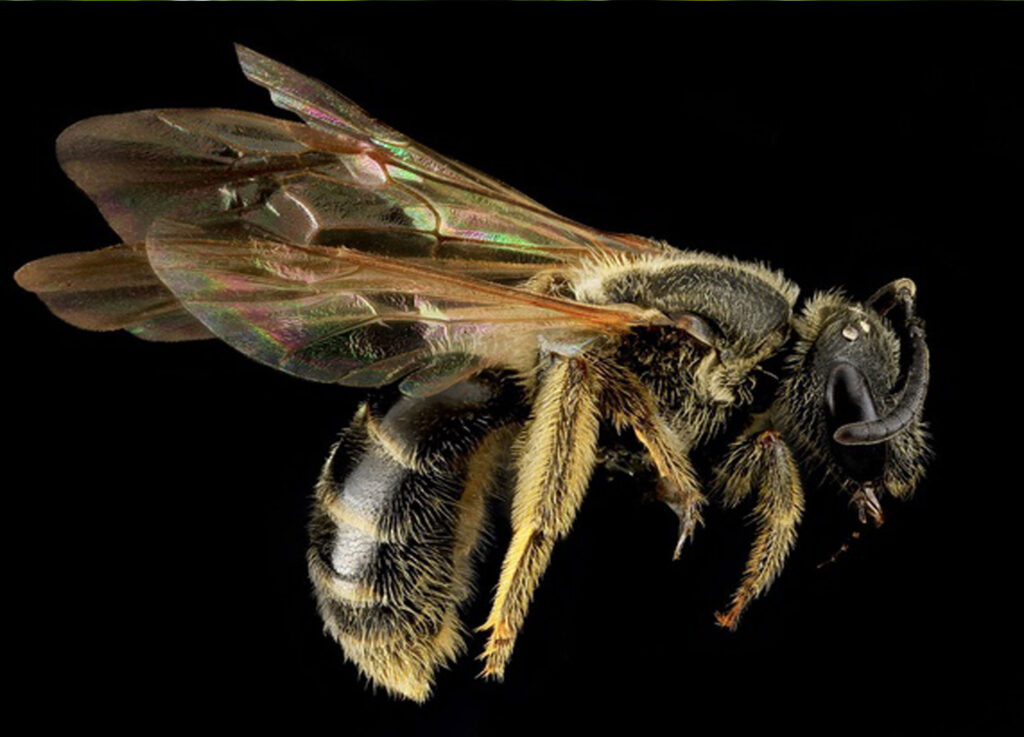
Sable Island Sweat Bee
The Sable Island sweat bee (Lasioglossum sablense) is endemic to Canada, occurring solely on Sable Island, Nova Scotia. The species is a a ground-nester with a preference for sandy soils. It occurs in only one isolated population, with a very small range, and no possibility of ‘rescue’ from elsewhere. Photo: USGS Bee Inventory and Monitoring Lab
Potential Ex Situ Role(s): Insurance Population
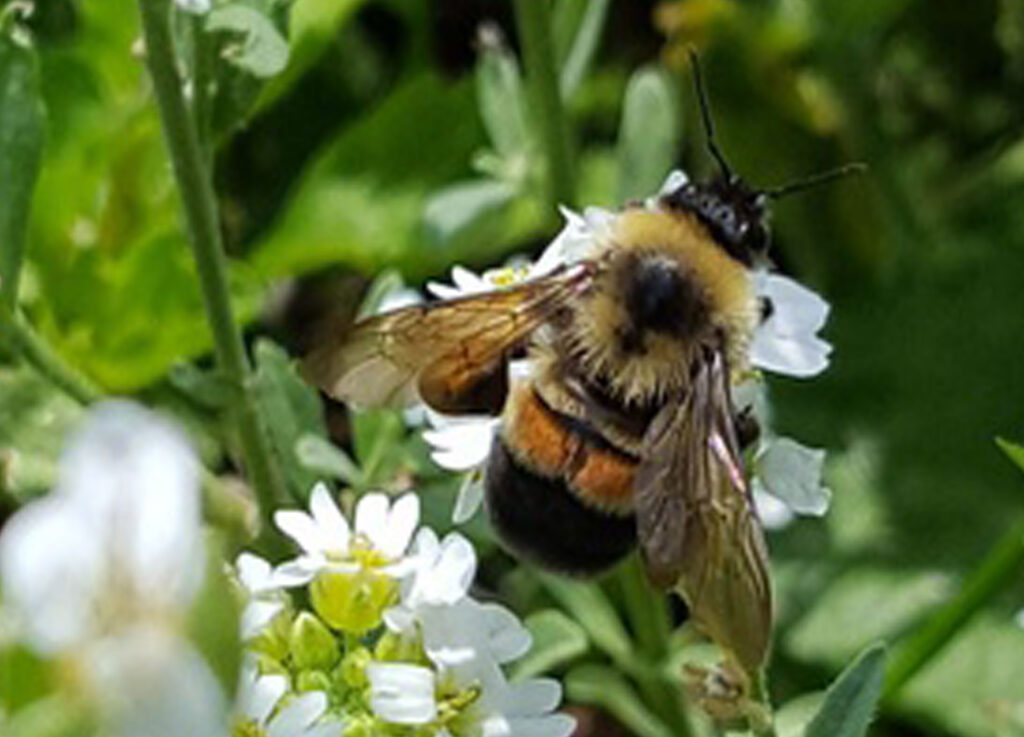
Rusty Patched Bumble Bee
The rusty-patched bumble bee (Bombus affinis) was once widespread in eastern and central North America. In Ontario, it has experienced a 99% decline and is now critically imperilled. It is in flight for a longer period than are most other bumble bees and it visits numerous plant genera in many habitat types. Thus, it is likely an important pollinator of both agricultural crops and native flowering plants. Photo: USFWS Midwest Region
Potential Ex Situ Role(s): Reintroduction (techniques for captive rearing in currently in developement)
Beetles
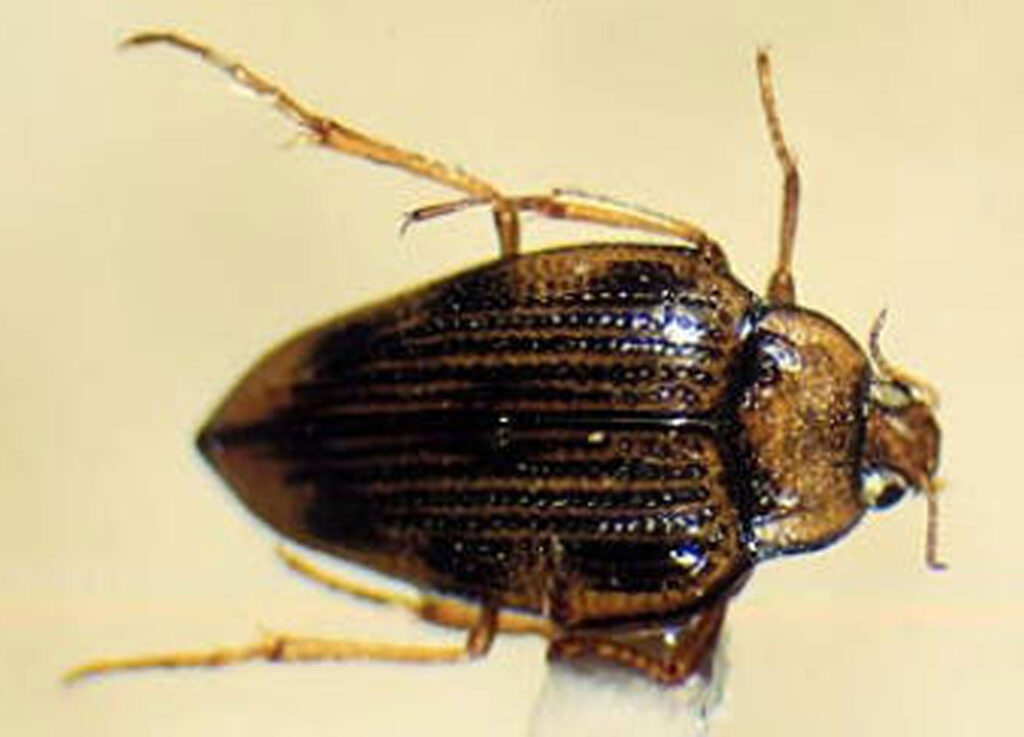
Hungerford Crawling Water Beetle
The Hungerford crawling water beetle (Brychius hungerfordi) can be found in fewer than 10 streams and rivers in northern Michigan and Ontario. The species has very specific habitat requirements and, not surprisingly, is considered as critically imperilled range-wide. Suitable habitat for this species appears to be closely tied to the presence and activity of beavers. Photo: U.S. Fish and Wildlife Service (public domain)
Potential Ex Situ Role(s): Reinforcement, Reintroduction
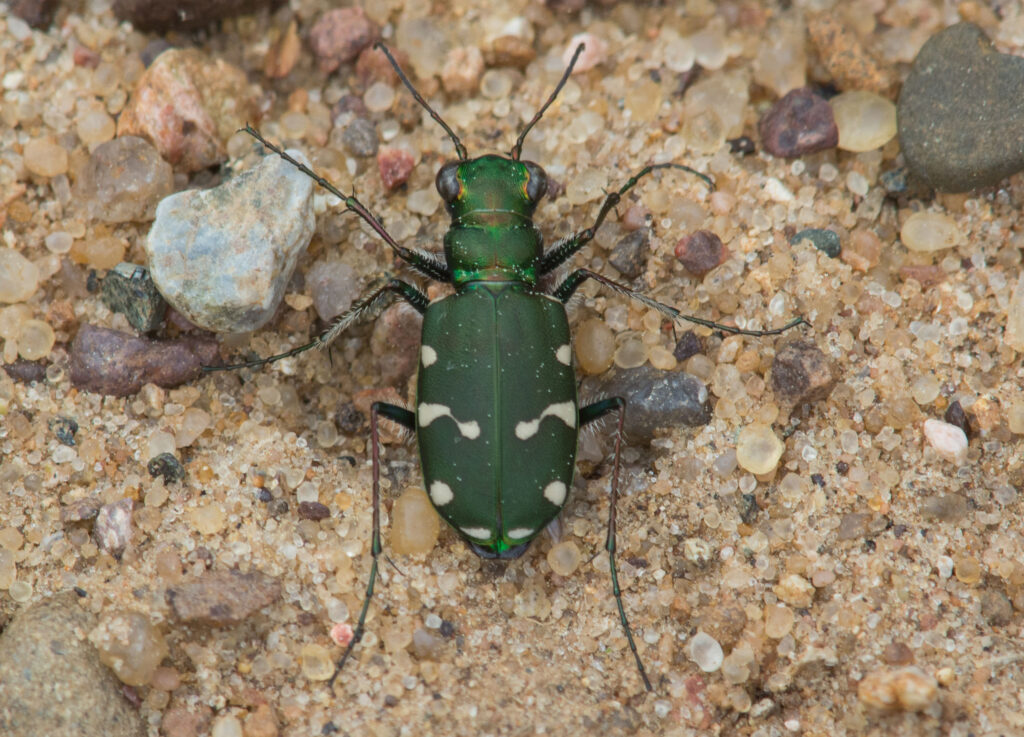
Northern Barrens Tiger Beetle
The Northern barrens tiger beetle (Cicindela patruela), once widespread in eastern North America, is now only found in one site in Canada. Many of the pine barrens that supported eastern populations still exist, and the reasons for extirpation of the beetle are not entirely clear. The species is under threat due to deforestation and fire suppression. Heavy recreational use of forest road could be taking a toll in some areas.
Potential Ex Situ Role(s): Reintroduction
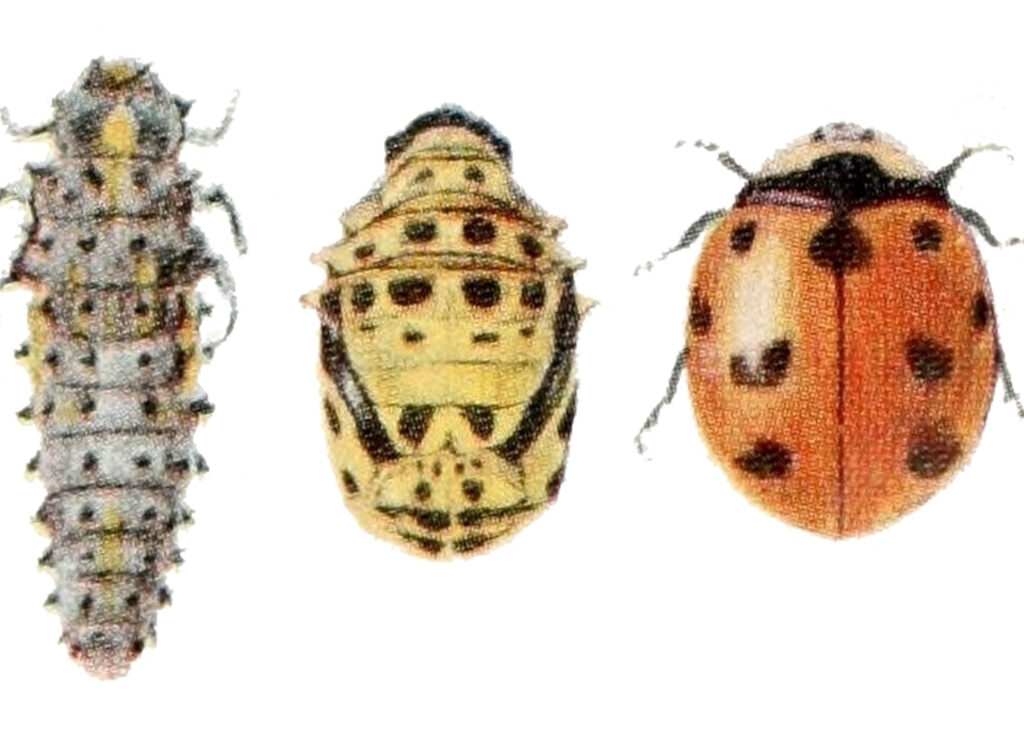
Nine spotted Lady Beetle
Lady beetles are iconic species to the general public. The nine-spotted lady beetle (Coccinella novemnotata) once occurred from southern Canada through to the Mexican border. Prior to significant declines, it was one of the more common lady beetle species in Canada. Today is it believed that they have been extirpated from almost all of its eastern range.
Potential Ex Situ Role(s): Reinforcement, Reintroduction, Assisted Colonization
Butterflies
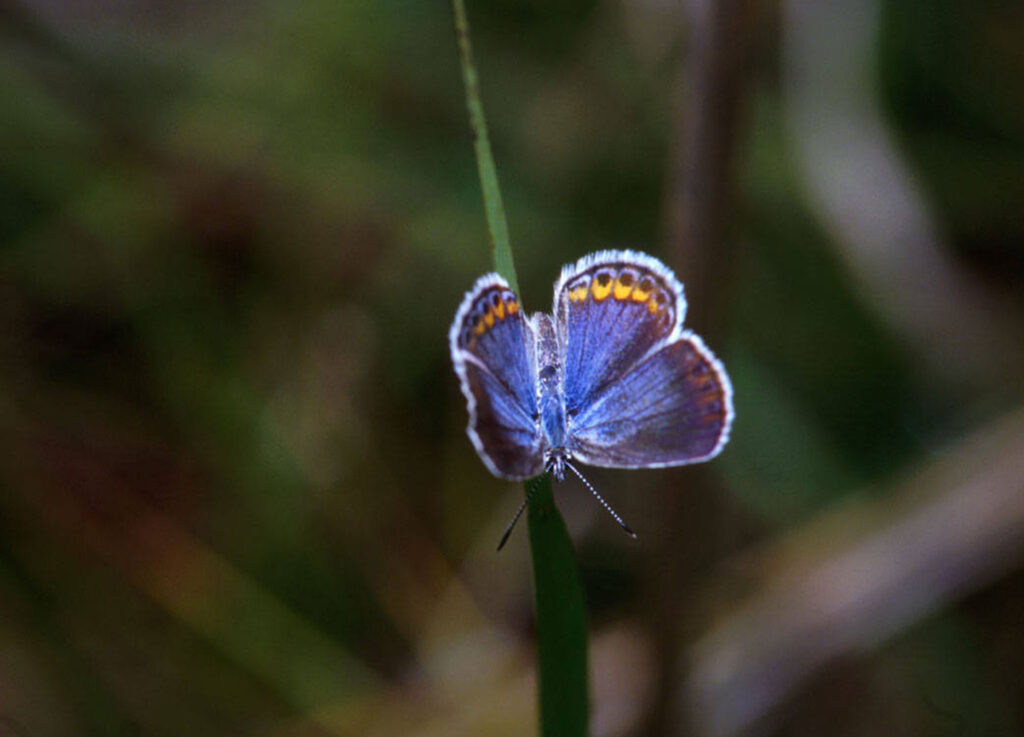
Karner Blue
The karner blue (Lycaeides melissa samuelis) may be the most studied butterfly in North America. Like several other butterfly species, it relies upon the lupin plant (Lupinus sp.). It is a critically imperilled species across its range, and while once found in Ontario, is now presumed extirpated. However, reintroductions have been successful elsewhere in the species range, so there is hope!
Potential Ex Situ Role(s): Reintroduction
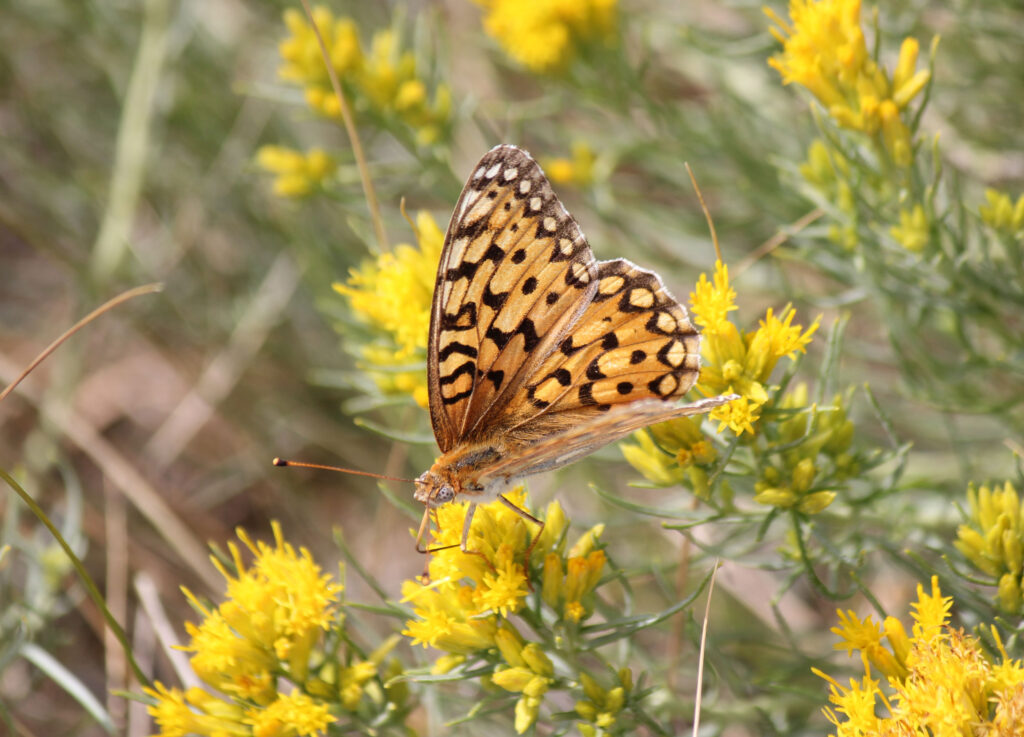
Mormon Metalmark
The mormon metalmark (Apodemia mormo) ranges widely across western North America from northern Mexico to Canada, where it is found in southern British Columbia and southwestern Saskatchewan. Populations in both provinces are at risk. As the butterfly is a habitat specialist, it is vulnerable to natural catastrophes, habitat loss and degradation.
Potential Ex Situ Role(s): Reintroduction
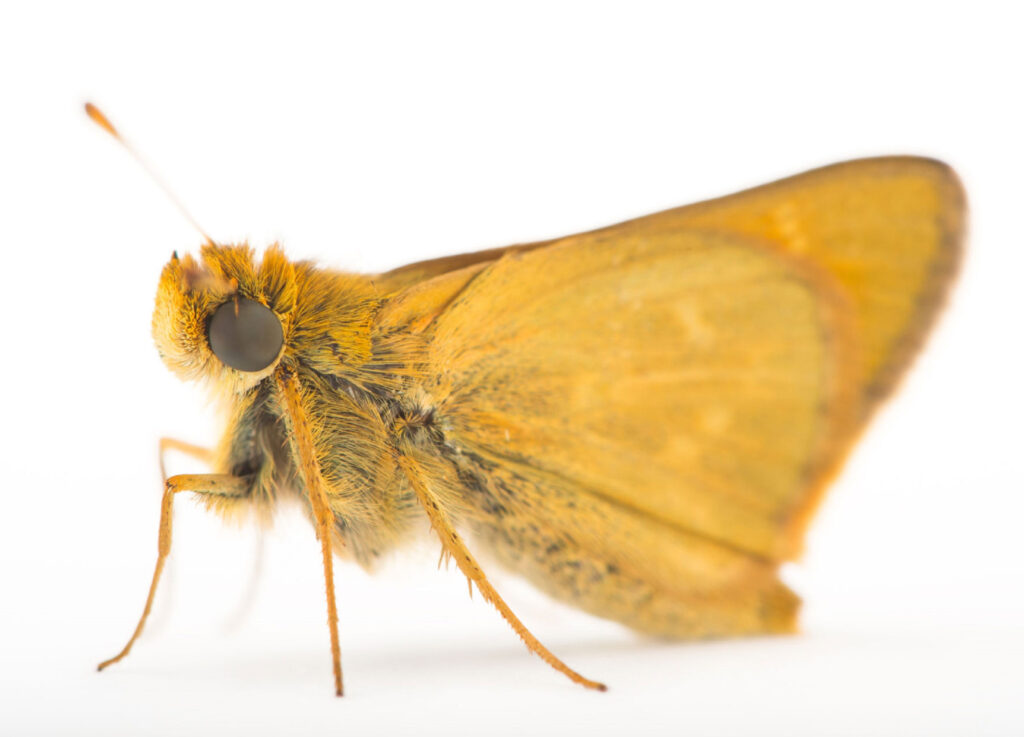
Dakota Skipper
Dakota skipper (Hesperia dacotae) is one of a small group of butterflies that are habitat specialist in native tallgrass and mixed-grass prairie habitats. Given their specialized needs, habitat loss and degradation have led to them being imperilled throughout their range. In Canada, populations only remain in small isolated areas in Canada.
Potential Ex Situ Role(s): Reintroduction

Frosted Elfin
The frosted elphin (Callophrys [incisalia] irus) specializes on lupin (Lupinus sp.) plants. It is believed that the frosted elphin may actually be several distinct species, with specific food-plant races and subspecies. The frosted elfin is a poor flier, which, along with its dependence on lupine, may explain why its populations are isolated and scattered. The species was once found in Ontario, but is now presumed extirpated. Photo: © Geoff Gallice
Potential Ex Situ Role(s): Training, Education, Reintroduction
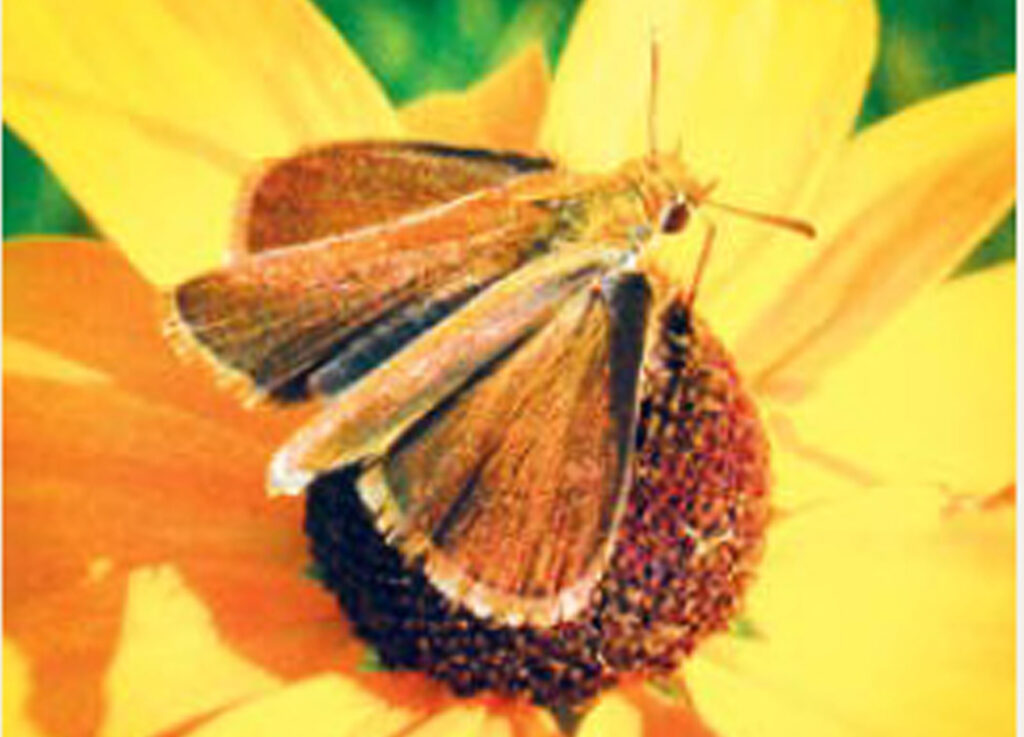
Ottoe Skipper
Like other skippers, the Ottoe skipper (Hesperia ottoe) is named for their fast, darting flight. While they are generally small, their powerful wing muscles enable them to attain speeds up to 30 km (20 miles) per hour. The species is associated with mixed-grass prairie vegetation. It has recently been found at only one location in Canada. Photo: Northern Prairie Wildlife Research Center – USGS
Potential Ex Situ Role(s): Reintroduction
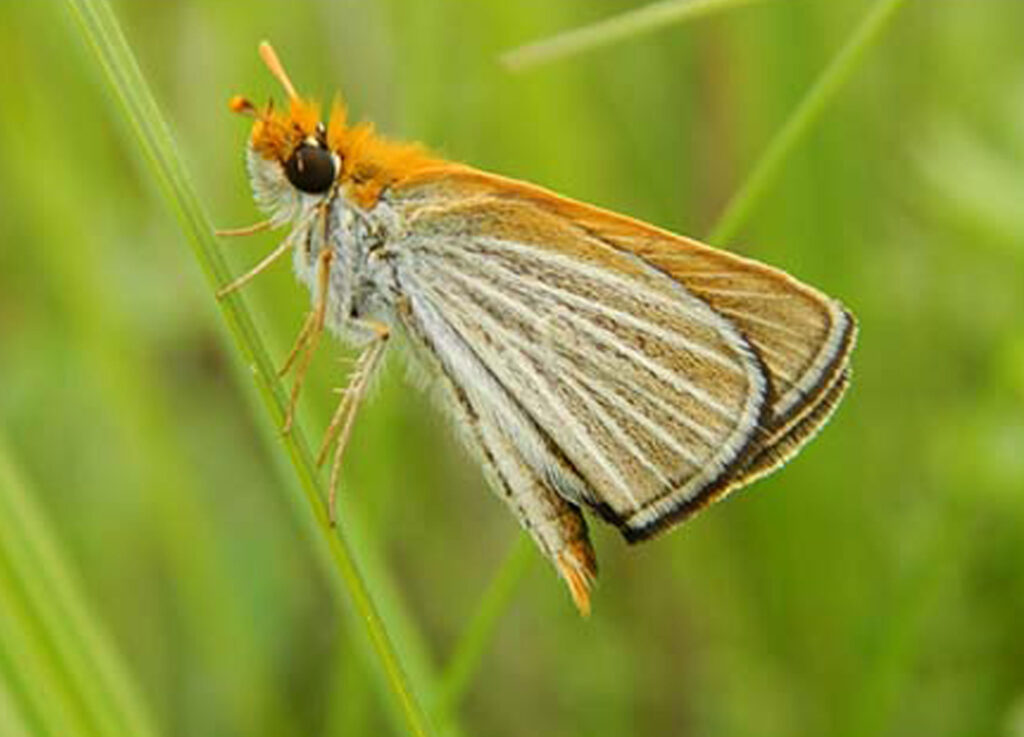
Poweshiek Skipperling
Poweshiek skipperling (Oarisma poweshiek) populations have collapsed throughout their range in the past decade. The adult population is now possibly only a few hundred individuals, but the cause of the collapse is still unknown. Each life stage relies upon a distinctive plant community and loss of this species from Canada would represent the loss of a significant element of the endangered prairie ecosystem. Photo: David L. Cuthrell
Potential Ex Situ Role(s): Reinforcement, Demographic Manipulation (underway), Reintroduction
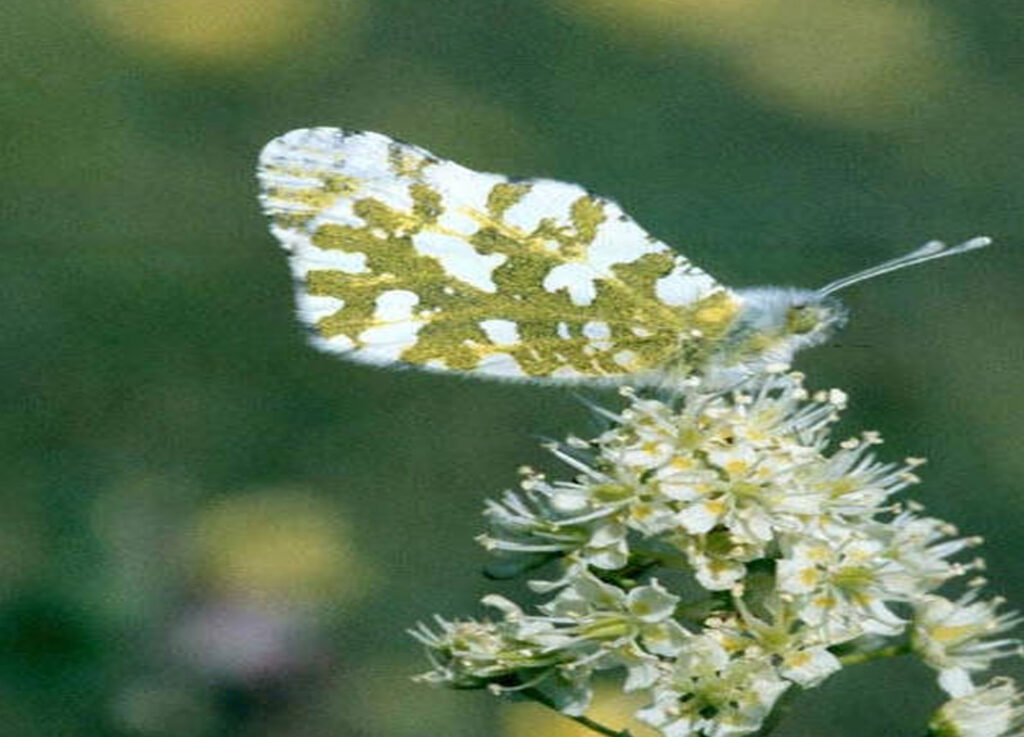
Island Marble
The island marble (Euchloe ausonides insulanus) is critically imperilled. It was thought to be extinct in 1908 until it was rediscovered on San Juan Island, Washington in 1988. The small mottled coloured butterfly is no longer found in Canada but some populations are believed to be secure.
Potential Ex Situ Role(s): Reinforcement, Reintroduction, Assisted Colonization

Eastern Persius Duskywing
The Eastern persius duskywing (Erynnis persius persius) relies upon lupin (Lupinus sp.) for food. This small non-descript butterfly is believed to be extirpated from Ontario, and thus Canada. Deteriorating habitat, massive decline of lupins, as well as threats from spraying for invasive gypsy-moth and herbicides in general are likely the cause of the species’ massive decline.
Potential Ex Situ Role(s): Reintroduction

Mottled Duskywing
The mottled duskywing (Erynnis martialis) is a butterfly representative of some of the rarest ecosystems in Canada, including oak and pine woodlands, tallgrass prairie and alvars. Historically, mottled duskywing ranged throughout eastern and central United States and parts of south-central Canada. Today, in Canada, it is imperilled in Manitoba and Ontario, and presumed extirpated in Quebec.
Potential Ex Situ Role(s): Reinforcement, Reintroduction (2021), Assisted Colonization
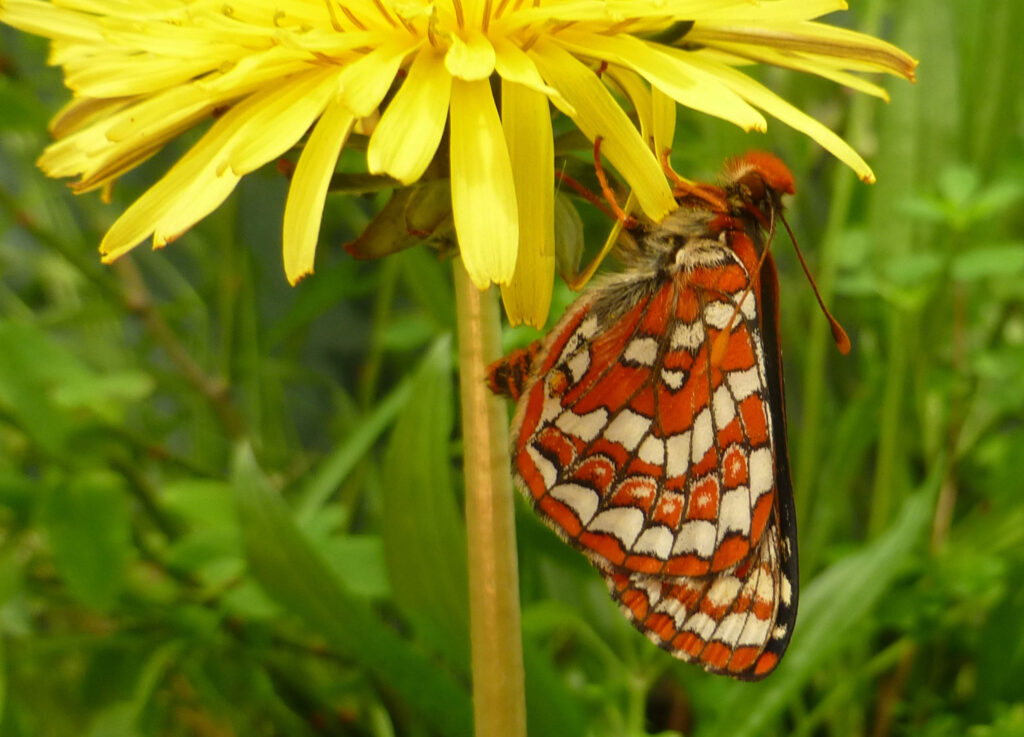
Taylor’s Checkerspot
The Taylor’s checkerspot butterfly (Euphydryas editha taylori) can be found only in Oregon, Washington, the coastal lowlands of southeastern Vancouver Island and the adjacent Gulf Islands in British Columbia. The species is critically imperilled on a global scale, and has become management-dependent because its habitats are now too small and fragmented and too heavily invaded by alien weeds to persist naturally. Photo: Peter Karsten
Potential Ex Situ Role(s): Reintroduction (underway)
Moths
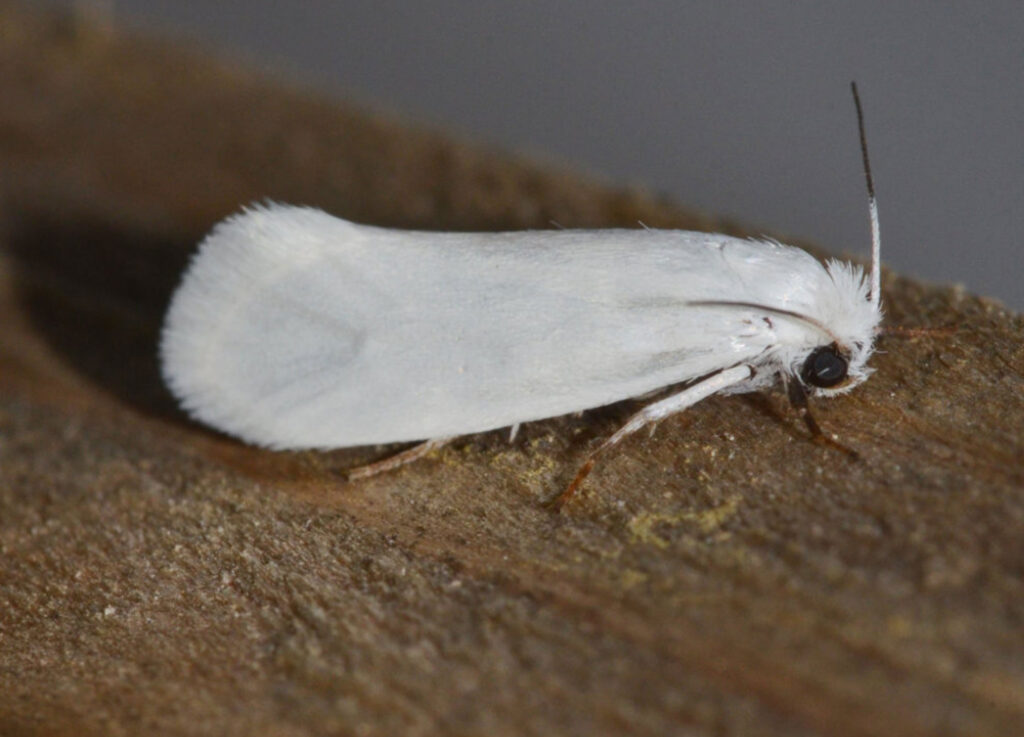
Yucca Moth, Five-spotted Bogus Yucca, and Non-Pollinating Yucca
The yucca moth (Tegeticula yuccasella) is characterized by a mutually beneficial and obligate relationship with soapweed (Yucca glauca). Yucca moth are the sole pollinator of soapweed, and larvae depend on this host plant as a food source. Some non-pollinating yucca moth larvae will consume soapweed, and thus compete with yucca moth for food. Both types are critically imperiled in Alberta, the species native range in Canada.
Potential Ex Situ Role(s): Reinforcement
The five-spotted bogus yucca moth (Prodoxus quinquepunctellus) is an obligate stem borer on the stalks of soapweed. Thus, as with the non-pollinating yucca moth, the five-spotted bogus yucca moth relies upon the mutualistic relationship between the yucca moth and the host plant. The flowers on non-pollinated soapweed stalks whither faster than pollinated stalks, resulting in almost complete mortality of immature life stages of five-spotted bogus yucca moth.
Potential Ex Situ Role(s): Reinforcement
The non-pollinating yucca moth (Tegeticula corruptrix), like yucca moths, it also relies upon soapweed as a food source for its larvae. However, this species of yucca moth does not have the specialized mouthparts required to pollinate the host plant. However, as soapweed fruit production is needed for food by the larvae of the non-pollinating yucca moth, it must rely on the mutualistic relationship between the yucca moth and the host plant. Photo: Andy Reago & Chrissy McClarren, used under a Attribution 2.0 Generic licence
Potential Ex Situ Role(s): Reinforcement

Sand-verbena Moth
Both the sand-verbena moth (Copablepharon fuscum) and its host plant are habitat specialist’s dependent on the coastal sand ecosystem. The moth is endemic to sites in the Strait of Georgia in British Columbia and the Puget Sound of Washington, but is currently found at fewer than 10 sites. A major loss of habitat and other threats has resulted in the species being critically imperilled. Photo: Wendy Gibble, used under a CreativeCommons CC_BY 2.0 licence
Potential Ex Situ Role(s): Assisted Colonization

Bogbean Buckmoth
Bogbean buckmoth (Herileuca sp.) shares its specialized habitat with a number of other rare species including the globally rare Eastern prairie fringed orchid (Platanthera leucophaea). Fewer than 10 populations are known to occur in North America, limited to New York state and the province of Ontario. The species relies on fens with growing conditions for the bogbean (Menyanthes trifoliata) plant that the early stage larvae depend on as a food source. Photo: Don Cuddy
Potential Ex Situ Role(s): Reintroduction, Assisted Colonization
